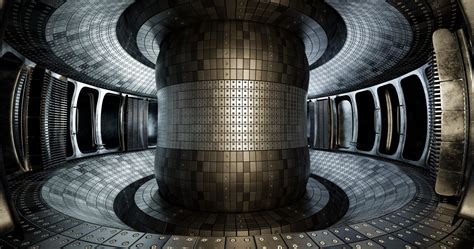The dream of harnessing fusion power has tantalized scientists, engineers, and energy strategists for decades. Often described as the holy grail of energy production, fusion promises a nearly limitless supply of clean power, mirroring the processes that fuel the sun. Despite this, fusion power has remained perpetually just out of reach, leading many to question whether it will ever transition from theoretical possibility to practical reality. The immense technical and financial challenges are significant barriers, but the scientific community’s relentless pursuit showcases the profound human drive for innovation and progress.
One of the fundamental criticisms of fusion power is its sheer cost. The colossal investments required for research, development, and construction of fusion reactors make it one of the most expensive technological endeavors imaginable. As one commenter astutely pointed out, for the same amount of money, we could already build decentralized solar power systems. Solar technology, with its current level of maturity and declining costs, presents an immediate solution to our energy needs. However, fusion’s allure lies in its promise of a single, powerful reactor that could potentially end our energy woes if and when it becomes viable.
The joke that fusion power is always ’50 years away’ underscores the skepticism shared by many in the scientific and public arenas. This skepticism is grounded in the historical pattern of over-promising and under-delivering. Despite notable milestones such as achieving nuclear fusion at small scales, a commercially viable fusion power plant remains elusive. AI’s meteoric rise from being ’30 years away forever’ to becoming an integral part of modern technology serves as a poignant reminder that sustained investment and breakthroughs can turn the tide. The gradual improvement in fusion technology’s triple product—which includes neutron flux, time, and energy—suggests progress, albeit slow.
The comparison between solar energy and fusion power often highlights the practical advantages of solar. Solar panels are already producing energy worldwide, with innovations accelerating their efficiency and storage capabilities. Despite the inherent disadvantages like night-time and cloudy weather conditions disrupting energy production, battery technology and other storage solutions are rapidly evolving. Innovative ideas such as long-distance power transmission and hydrogen energy storage are gaining traction, suggesting that the gap between renewable energy generation and demand can be effectively bridged.
Fusion power’s primary technical challenge lies in managing the astronomical amounts of heat generated by the reactions. Unlike our sun, which is buffered by 93 million miles of vacuum and the Earth’s magnetic field, terrestrial fusion reactors must contain the reaction and handle the heat safely. Complex systems using magnetic and physical containment have been developed, but the materials science challenges—especially regarding neutron radiation—are formidable. The need for specialized materials that can withstand such extreme conditions only adds to the technical and economic hurdles fusion technology faces.
Interestingly, the conversation around decentralized solar energy and fusion illuminates broader themes about energy strategy. Given that climate change is an urgent issue, the immediacy of solutions like solar and wind becomes more appealing. These technologies are not only cheaper but are also deploying at a scale that significantly impacts energy production globally. However, it’s important to remember that this need for rapid deployment does not negate the potential for fusion power. Fusion could still be the endgame for humanity’s energy requirements, a limitless source that could facilitate the transition to a post-fossil fuel era.
The global grid concept, powered by renewable energy and connected through ultra-high-voltage direct current (UHVDC) lines, exemplifies the collaborative vision for a sustainable future. Although this approach presents its own set of infrastructure and political challenges, it opens exciting possibilities. The idea of a global energy market, where electricity can be traded across continents as a commodity, could provide the necessary base load for even the most energy-hungry societies. Whether fusion can fit into this vision remains to be seen, but its potential should not be discounted.
Commercial fusion power plants might not just revolutionize our energy systems but could also lead to scientific and engineering advancements in other fields. The high demands of fusion research could catalyze breakthroughs in materials science, robotics, and artificial intelligence. As we continue to drift towards an era dominated by AI and advanced computing, the co-evolution of fusion technology could yield unexpected benefits. Companies and nations investing in fusion are not just chasing energy solutions but are fostering an environment where multiple disciplines might see leaps in progress.
Ultimately, the pursuit of fusion power symbolizes humanity’s unyielding quest for mastery over nature. It’s a vision deeply intertwined with our aspirations for technological supremacy and sustainability. Although faced with skepticism and monumental challenges, the dream persists, driven by the same curiosity and tenacity that spearheaded past innovations. While decentralized renewable energy like solar offers immediate and practical benefits, the research and development in fusion power are invaluable for our long-term goals. Thus, the debate circles around a crucial question: Should we focus on the attainable marvels of today or invest in the audacious promises of tomorrow?


Leave a Reply